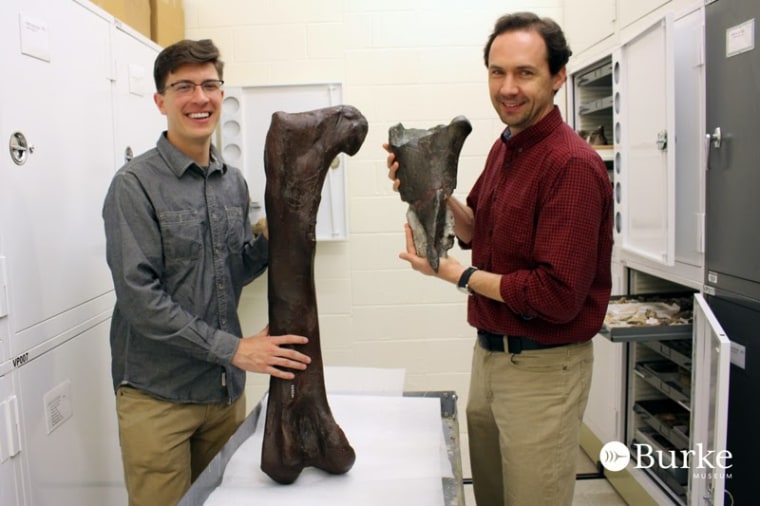A fragmented femur bone hidden underwater for millions of years has provided the first evidence that a dinosaur once roamed Washington state.
And not just any dinosaur: Researchers say this beast was a theropod — a two-legged, mostly meat-eating group of beasts that are linked to modern-day birds. Other theropods include Tyrannosaurus rex and Velociraptor.
Scientists found the 80 million-year-old fossil of the dinosaur when they were searching for ammonites — extinct marine invertebrates with spiral shells — and other fossilized animals. They had focused their fieldwork in the San Juan Islands, an archipelago located a short ferry ride away from Seattle. [See Images of the Fossil of the First Dinosaur Found in Washington]

In April 2012, when the tide was out, they noticed a fossilized bone embedded in the marine rock. The researchers immediately contacted paleontologists at the University of Washington, who sent out a team in May of that year to excavate the fossil with a rock saw.
"The rock there is tremendously hard, so it took them a full day to excavate it," said Christian Sidor, a co-author of the study and a curator of vertebrate paleontology at the Burke Museum at the University of Washington.
Sidor and his colleagues spent about a year and a half preparing the fossil, and "for the longest time, I was unconvinced that we were going to be able to say anything else besides 'It's a large bone,'" he told LiveScience. "What was exposed on the surface really had no anatomy. I couldn't tell if it was a dinosaur, couldn't tell if it was a marine reptile, couldn't tell anything about it."
Once they removed the fossil from the rock and flipped it over, the researchers saw several signs that the fossil was half of the left femur (thighbone) of a theropod dinosaur. It measures 16.7 inches long by 8.7 inches wide (42 by 22 centimeters) but would have been almost 4 feet (1.2 meters) long — or slightly smaller than a T. rex thighbone — before it broke, the researchers said.
Several clues suggest the fossil belonged to a theropod, Sidor said. For instance, the fossil once had a hollow middle cavity, which was unique to theropods during the late Cretaceous period. The bone also had a feature positioned closely to the hip, called a fourth trochanter. That feature is commonly associated with theropods. The researchers said it "seems likely" that the creature was a tyrannosauroid, a older cousin of T. rex.
The specimen was uncovered near fossils of the clam species Crassatellites conradiana, which lived in shallow water. This suggests that the dinosaur died near the sea, was tossed around by the waves and found its resting place among the clams, the researchers said.
The find makes Washington the 37th U.S. state known to have dinosaur fossils.
Active plate tectonics and a vast amount of urban development have made it difficult for scientists to find dinosaur fossils in Washington, the researchers said. However, isolated dinosaur skeletons and bones have been found in nearby regions such as Oregon, California and south central Alaska.
The study was published online Wednesday in the journal PLOS ONE. The fossil is due to go on display at the Burke Museum on May 21.
This is a condensed version of a report from LiveScience. Read the full report. Follow Laura Geggel on Twitter. Follow Live Science on @Twitter, Facebook and Google+.